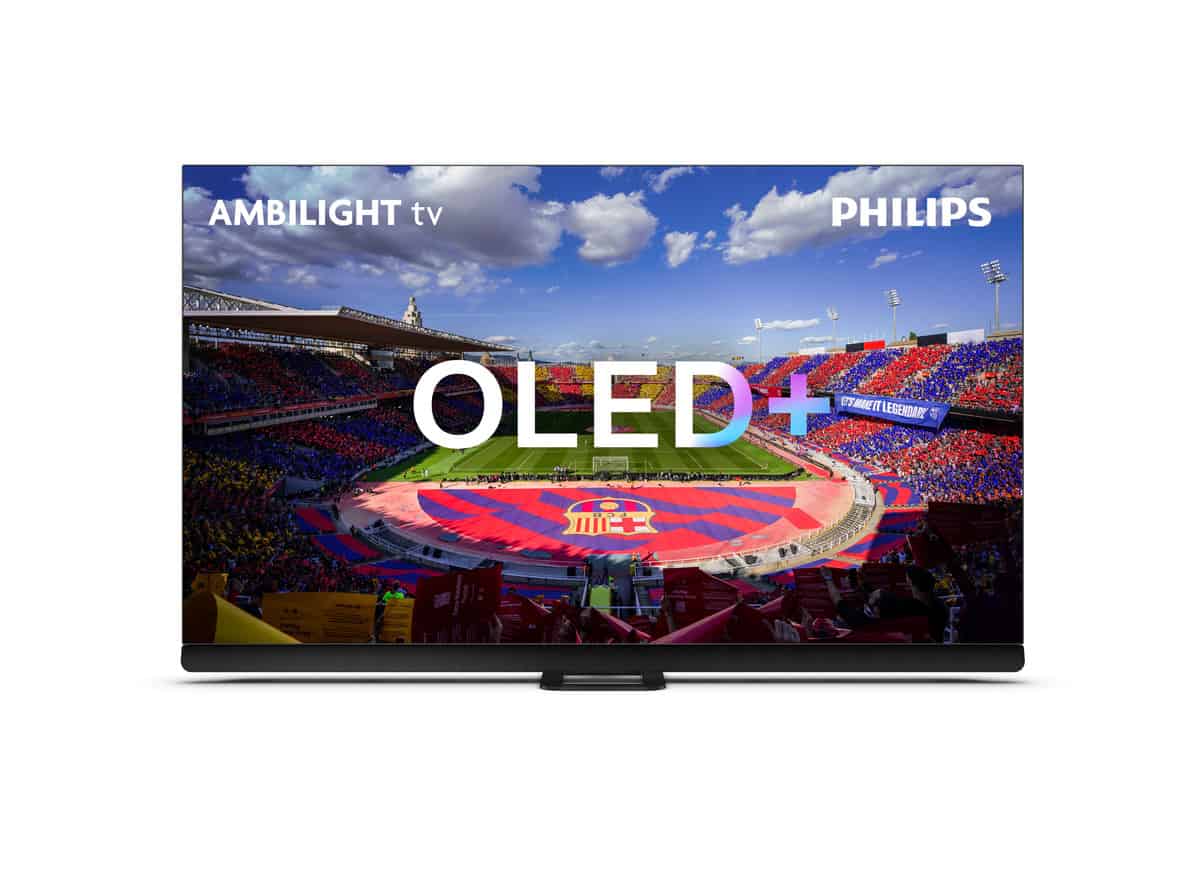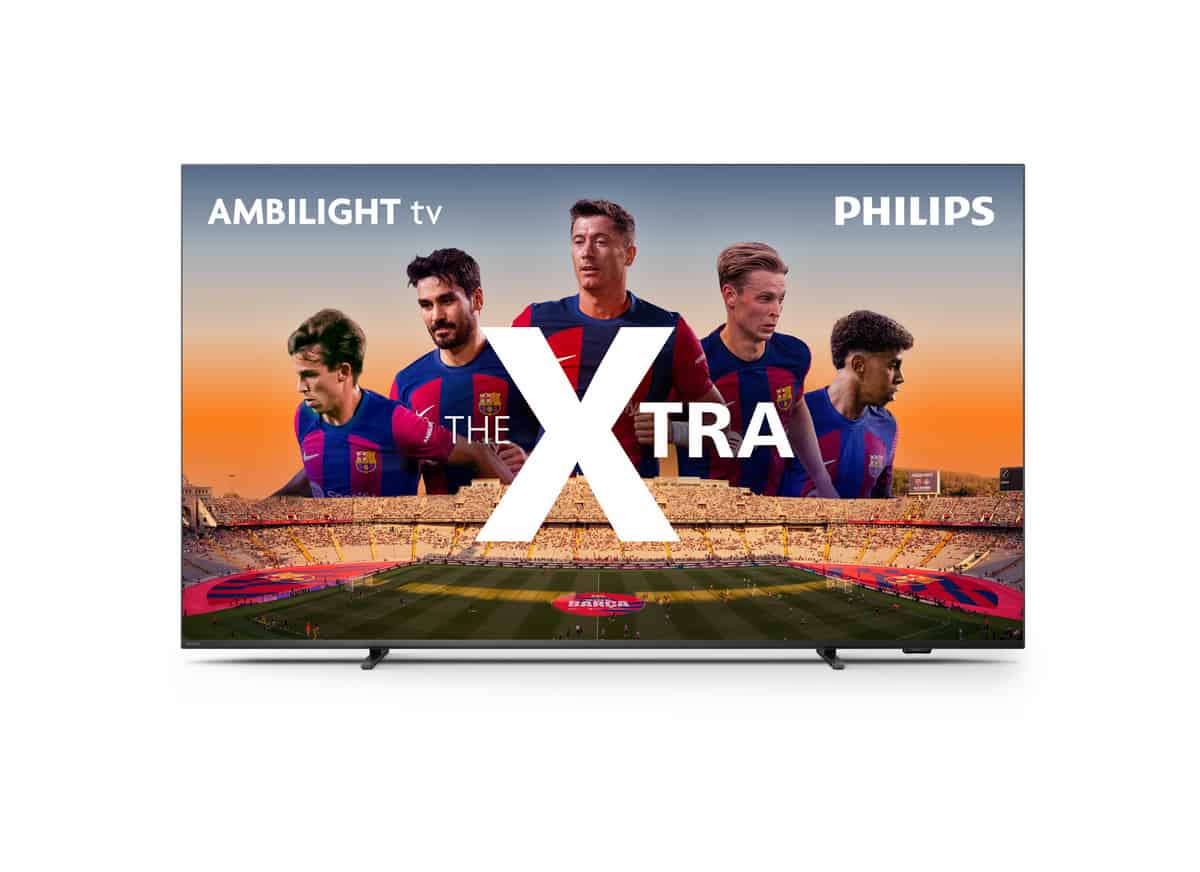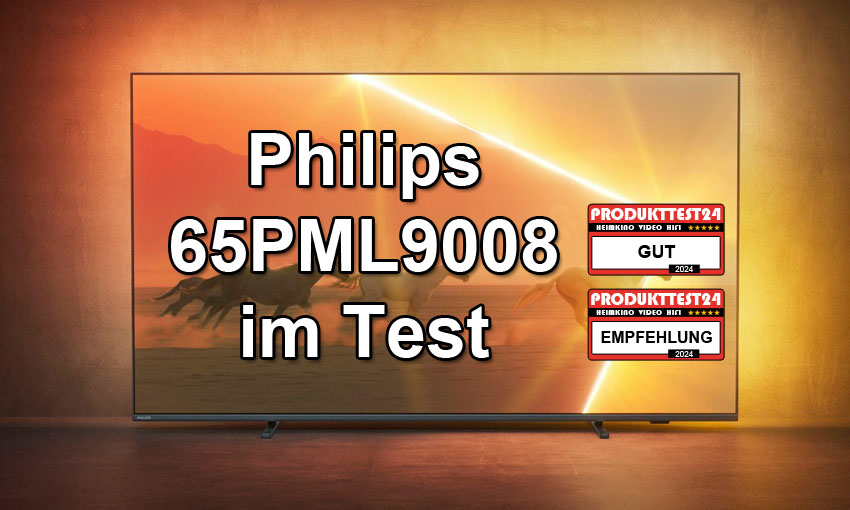Vsak se lahko zmoti.. Ti pa se ne motiš, ker vsake toliko napišeš kakšno neumnost.. Sicer pa, če se dobro spomnim je Samsung leta nazaj na svojem OLED imel modre diode.Andrej, vse razumem, samo to mi ni jasno, kot si nekje zapisal, da pri LG OLEDih najbolj crkavajo modre oledice. Kako je to možno, saj ima WOLED vgrajene samo bele oledice. To pa res ne razumem. Pričakujem, da mi ti, kot vrhunski strokovnjak, to strokovno objasniš.
OLED TV
- Ustvarjalec teme bpfc
- Začetni datum
Uporabljate neposodobljen brskalnik. Ta ali druga spletna stran morda ne bo prikazana pravilno.
Posodobite brskalnik ali uporabite alternativni brskalnik.
Posodobite brskalnik ali uporabite alternativni brskalnik.
Če prav razumem andrejevo pisanje, če želiš tv s top tehnologijo na trgu potem kupiš LG G3?
Pa ne samo to. Po njegovih izjavah, kot strokovnjaka za Philips TV, je Philipsova doba delovanja TVeja, 5 do 6 let. LGejevega pa 10-12 let.Če prav razumem andrejevo pisanje, če želiš tv s top tehnologijo na trgu potem kupiš LG G3?
Tu se lepo vidi kako konkretno je boljši ta Philipsov TV:Tukaj imaš konkretno kvalitetnejši Philips model

PHILIPS OLED 4K serija 908 TV sprejemnik
Vstopite v drug svet Televizor 4K Ambilight z zvokom Bowers & Wilkins Zakaj bi le gledali od zunaj, če lahko vstopite?www.bigbang.si
Pa ta test ni vreden nič, kot so že nekateri napisali na drugem forumu.. Kaj ne vidiš kakšne neumnosti so zapisane..? Daj mi strokovno razloži, kako je lahko C3, da ne govorim o B3 modelu kvalitetnejši od Philipsa 908..?? Pa tudi kar se tiče zvoka je dobil C3 boljšo oceno od Philipsa..Tu se lepo vidi kako konkretno je boljši ta Philipsov TV:
 Pa je Philips eden izmed najboljših kar se tiče zvoka na tržišču. To vse pove o tem testu, ki so ga delali slepi in gluhi.
Pa je Philips eden izmed najboljših kar se tiče zvoka na tržišču. To vse pove o tem testu, ki so ga delali slepi in gluhi.Andrej, ni vse v panelu. Tudi procesiranje je zelo pomembno. Procesor v C3 uporablja LG-jevo napredno tehnologijo globokega učenja, ki jo poganja AI, da zagotovi odlično kakovost slike in zvoka. Omogoča izboljšano povečanje ločljivosti za večjo jasnost, izboljšano dinamično preslikavo tonov pa pomaga poudariti globino in podrobnosti v vsaki sliki. Vključuje tudi tehnologijo za obdelavo slik, ki zaznava predmete ali obraze in jih izboljša za bolj realistično kakovost HDR. Poleg tega vsak stereo zvok pretvori v prostorski zvok, in s tem zagotavlja, da so gledalci še bolj potopljeni v dogajanje na zaslonu, tako da prek sistema zvočnikov, vgrajenih v televizor, zagotavlja virtualni prostorski zvok 9.1.2.Pa ta test ni vreden nič, kot so že nekateri napisali na drugem forumu.. Kaj ne vidiš kakšne neumnosti so zapisane..? Daj mi strokovno razloži, kako je lahko C3, da ne govorim o B3 modelu kvalitetnejši od Philipsa 908..?? Pa tudi kar se tiče zvoka je dobil C3 boljšo oceno od Philipsa..Pa je Philips eden izmed najboljših kar se tiče zvoka na tržišču. To vse pove o tem testu, ki so ga delali slepi in gluhi.
Čez koliko let bo Philips vse to omogočal? Poleg tega pa še, samo dva HDMI 2.1 vhoda, nizka sivina (gama). Pa višek sramote, kar se prvorazrednim proizvajalcem TVejev ne dogaja že 20let, telekomanda, ki dobro deluje samo pred televizorjem.
Kaj ti se delaš res neumnega..? AI procesor v glavnem tako uprabljajo vsi proizvajalci v televizorjih višjega in najvišjega ranga..! Seveda so razlike, vendar med temi vodilnimi proizvajalci so te razlike majhne. Tukaj si lahko pogledaš kar se tiče samega Philips procesorja.. Lani mu je ta primat vzel Sony. Sicer pa sam procesor ne more nadomestit prevelike razlike v samih panelih, kakor je razlika med MLA in EX paneli..Kar se tiče zvoka tudi pišeš neumnosti, seveda , ker v praksi sploh nisi slišal še kako zvenita omenjena modela. Lahko si prebereš nekaj mnenj iz testov glede Philipsovega zvoka.. Ko jaz primerjam Lg C3 in Philips 908 zveni Lg kot kakšen tranzistor v primerjavi z Philipsom..Andrej, ni vse v panelu. Tudi procesiranje je zelo pomembno. Procesor v C3 uporablja LG-jevo napredno tehnologijo globokega učenja, ki jo poganja AI, da zagotovi odlično kakovost slike in zvoka. Omogoča izboljšano povečanje ločljivosti za večjo jasnost, izboljšano dinamično preslikavo tonov pa pomaga poudariti globino in podrobnosti v vsaki sliki. Vključuje tudi tehnologijo za obdelavo slik, ki zaznava predmete ali obraze in jih izboljša za bolj realistično kakovost HDR. Poleg tega vsak stereo zvok pretvori v prostorski zvok, in s tem zagotavlja, da so gledalci še bolj potopljeni v dogajanje na zaslonu, tako da prek sistema zvočnikov, vgrajenih v televizor, zagotavlja virtualni prostorski zvok 9.1.2.
Čez koliko let bo Philips vse to omogočal? Poleg tega pa še, samo dva HDMI 2.1 vhoda, nizka sivina (gama). Pa višek sramote, kar se prvorazrednim proizvajalcem TVejev ne dogaja že 20let, telekomanda, ki dobro deluje samo pred televizorjem.
The C3 has a 2.2-channel built-in speaker system along with decoding for Dolby Atmos and DTS immersive soundtrack formats. An AI sound mixer feature also upscales stereo audio for Atmos output.
There’s the usual slew of sound modes such as Music, Cinema, Sports, etc., but the one that works best for most content is AI Sound Pro. The C3’s audio quality is fairly average for a TV: voices have a somewhat thin quality, and there’s not much in the way of bass. Dialogue comes across as clear, though, and the sound can hit loud levels if you push the volume.
1)
The OLED908 comes with a Bowers & Wilkins-designed sound system, the drivers of which are housed in a thin, Kvadrat-covered bar that’s mounted to the TV’s bottom edge. These drivers are arranged in a purely front-firing 3.1 configuration, and the whole system is rated to 80W.
This is a clear technical step up on its direct rival, the LG G3, which has a hidden, 60W, 2.1 system. Putting the Philips through its paces, we can confirm it is one of the best-inbuilt sound packages on an OLED TV at the moment.
2)
Whilst the OLED908 won’t beat the best soundbars available, its built-in audio is no slouch. For those looking to avoid buying a soundbar, the Philips OLED908 is one of the best TVs for sound you can get.
3)
The sound is one of the best in a TV right now, although it is unfortunately a step back in both weight and detail reproduction from last year’s top model OLED+937. Most people can do well with it without having to supplement with a soundbar, but I miss the little extra that 2022’s best Philips could deliver.
4)
Philips OLED+908 Sound Quality
The OLED+908 is the latest in a long line of premium TVs to feature a Bowers & Wilkins sound system and it has the latest technology and speaker drivers fitted to ensure the best possible sound quality.
The result is one of the best-sounding TVs we have heard this year with a nice wide sound stage complemented by a deep and weighty bass that sounds rich and full. Music sounds just as good as normal TV and movies, with excellent separation between the channels, yet a cohesiveness between the drivers to provide a wall of sound that fits with the size of the TV. Yes, you can get better from a dedicated soundbar or external sound system, but as an all-in-one package for normal TV, sports, gaming and the occasional movie soundtrack, the Bowers & Wilkins system on the OLED+908 is excellent.
Tukaj si recimo lahko malo pogledaš moj video modela 908, kako zveni sam zvok.. Sicer seveda ne moreš preko videa oceniti sam zvok, vendar se že tukaj lahko malo sliši kako zveni sam zvok.. Takšen zvok ne boš slišal nikoli na nobenem Lg-ju..
A ti še vedno misliš, da je Lg popoln izdelek..? Pa tukaj se sedaj pogovarjava predvsem o sliki in zvoku..Andrej, TV ima lahko vrhunsko sliko, samo če moram v TV tišat telekomando, da prime, je to za mene polizdelek, neuporabna zedeva.
Kakšno mnenje glede tega https://www.harveynorman.si/smart-tv-sprejemnik-hisense-65u7kq za monitor? Dobim kaj boljšega do 1k€?
OLED sem odmislil saj kot rečeno, monitor. Dela se pa vse od iger, filmov, youtube, eon itd. Zvok, daljinec in OS mi ni pomemben. Edina važna je slika.
OLED sem odmislil saj kot rečeno, monitor. Dela se pa vse od iger, filmov, youtube, eon itd. Zvok, daljinec in OS mi ni pomemben. Edina važna je slika.
Tukaj imaš tudi zelo dober Philips model..Kakšno mnenje glede tega https://www.harveynorman.si/smart-tv-sprejemnik-hisense-65u7kq za monitor? Dobim kaj boljšega do 1k€?
OLED sem odmislil saj kot rečeno, monitor. Dela se pa vse od iger, filmov, youtube, eon itd. Zvok, daljinec in OS mi ni pomemben. Edina važna je slika.

PHILIPS 65PML9008/12 MiniLED TV sprejemnik
Prepustite se filmom. Igranje, ki ga občutite. Televizor 4K Ambilight. Resnično se potopite v akcijo!
www.bigbang.si
Saj ni samo Ambilight plus. Philips ima tudi boljši prikaz barv, boljše procesiranje slike, z zadnjo nadgradnjo je dobil tudi tri nove mod nastavitve kot so: Calman, Monitor in Gaming. Tudi sam odziv panela, je boljši kakor na Hisense modelu.Ambilight je vsekakor plus. Bom preveril še to, hvala.
Izbral si dober TV, to kar ti pa predlaga Andrej je pa dosti slabše. Napisal si sicer, da sta ti daljinec in OS nepomembna, samo oboje ima ta Philips zelo slabo. OS je še ne preizkušen. Poleg tega je Hisense ULED, Philips pa še klasičen LED z mini LED osvetljavo, kar je podobno, kot če bi v prispodobi na Katrco montiral spojlerje, in bi mislil, da imaš športni avto.Kakšno mnenje glede tega https://www.harveynorman.si/smart-tv-sprejemnik-hisense-65u7kq za monitor? Dobim kaj boljšega do 1k€?
OLED sem odmislil saj kot rečeno, monitor. Dela se pa vse od iger, filmov, youtube, eon itd. Zvok, daljinec in OS mi ni pomemben. Edina važna je slika.
Kateri 55" in večji LCD televizor? @ Slo-Tech
Zopet pišeš velike neumnosti. Kar se tiče ULED je več ali manj marketing.. Gre za MINI LED tehnologijo in nič drugega.. Tako si tudi pri Samsungu opeval DUAL tehnologijo, ki pa v praksi sploh ni nikakršna prednost.. Proizvajalci so sicer srečni, da še obstajajo takšni kot si ti, da nasedajo na marketinške trike..Kar pa se tiče samega OS-a na Philipsu, si lahko tukaj malo pogledaš moj video, da ne boš zopet pisal neumnosti..Tudi kar se tiče daljinca je zelo dober. Ne vem kako te ni sram pisati takšne dezinformacije, če sploh nimaš nobenenih izkušenj s televizorji posebej pa ne s Philipsom.. Saj sem ti že napisal, takšnih kavč strokovnjakov kot si ti je na forumu kar dosti, tistih, ki pa resnično poznajo tv tehnologijo pa žal bolj malo.!Izbral si dober TV, to kar ti pa predlaga Andrej je pa dosti slabše. Napisal si sicer, da sta ti daljinec in OS nepomembna, samo oboje ima ta Philips zelo slabo. OS je še ne preizkušen. Poleg tega je Hisense ULED, Philips pa še klasičen LED z mini LED osvetljavo, kar je podobno, kot če bi v prispodobi na Katrco montiral spojlerje, in bi mislil, da imaš športni avto.
Kateri 55" in večji LCD televizor? @ Slo-Tech
slo-tech.com
Malce sem res raziskoval včeraj in me skrbi, da dobim takega Philipsa. Sem upal da z mini led ni več takih problemov.

Andrej, kdo piše tukaj neumnosti? Proizvajalci TVejev uporabljajo že tretjo generacijo QD nanosov, ti pa govoriš, da je to marketing. Kar se tiče DUAL osvetljevanja ozadja, je vsekakor prednost pred TVeji z directLED osvetljevanje, brez con in dimminga, kar ima večina Philips LED TVejev. Kar se tiče novega Titan OSa imaš tu še en primer težav z njim:Zopet pišeš velike neumnosti. Kar se tiče ULED je več ali manj marketing.. Gre za MINI LED tehnologijo in nič drugega.. Tako si tudi pri Samsungu opeval DUAL tehnologijo, ki pa v praksi sploh ni nikakršna prednost.. Proizvajalci so sicer srečni, da še obstajajo takšni kot si ti, da nasedajo na marketinške trike..Kar pa se tiče samega OS-a na Philipsu, si lahko tukaj malo pogledaš moj video, da ne boš zopet pisal neumnosti..Tudi kar se tiče daljinca je zelo dober. Ne vem kako te ni sram pisati takšne dezinformacije, če sploh nimaš nobenenih izkušenj s televizorji posebej pa ne s Philipsom.. Saj sem ti že napisal, takšnih kavč strokovnjakov kot si ti je na forumu kar dosti, tistih, ki pa resnično poznajo tv tehnologijo pa žal bolj malo.!
Kateri 55" in večji LCD televizor? @ Slo-Tech
Kateri 55" in večji LCD televizor? @ Slo-Tech
WEAK POINTS
- Two HDMI 2.1 inputs only.
- Poor gray levels (gamma).
- Remote control that only works well in front of the TV.
Zopet obračaš besede.. Kje pa sem jaz napisal,da sem strokovnjak..?? Kar pa se tebe tiče pa pišeš , kot, da se že 20 ali 30 let ukvarjaš s televizorji..
Kar pa se tiče model 9008, si lahko tukaj malo prebereš kaj pravijo tudi drugi uporabniki tega modela, in pa še test tega modela.

 www.produkttest24.com
www.produkttest24.com
Kar pa se tiče model 9008, si lahko tukaj malo prebereš kaj pravijo tudi drugi uporabniki tega modela, in pa še test tega modela.

Philips 65PML9008/12 im Test - Produkttest24.com - aktuelle Fernseher im Praxistest
Philips 65PML9008/12 Test: Erlebe die faszinierenden Vorteile der MiniLED-Technik in HDR und Dolby Vision Filmen. Wir haben ihn getestet.
Priponke
V praksi pri gledanju vsebin ti ne boš zaznal teh težav.. Sicer pa so z zadnjo nagradnjo Softwerja odpravljene težave kot so Blooming in sam nadzor osvetlitve panela. Sicer pa treba vklopit lokalni kontrast in bo slika precej boljša. Pa tudi dodani so trije modi: Calman še za natančnejšo sliko kakor tudi game in monitor mode. Sicer pa treba vedet, da je MINI LED še vedno izboljšana LED tehnologija in seveda ni na nivoju OLED tehnologije..!Malce sem res raziskoval včeraj in me skrbi, da dobim takega Philipsa. Sem upal da z mini led ni več takih problemov.






